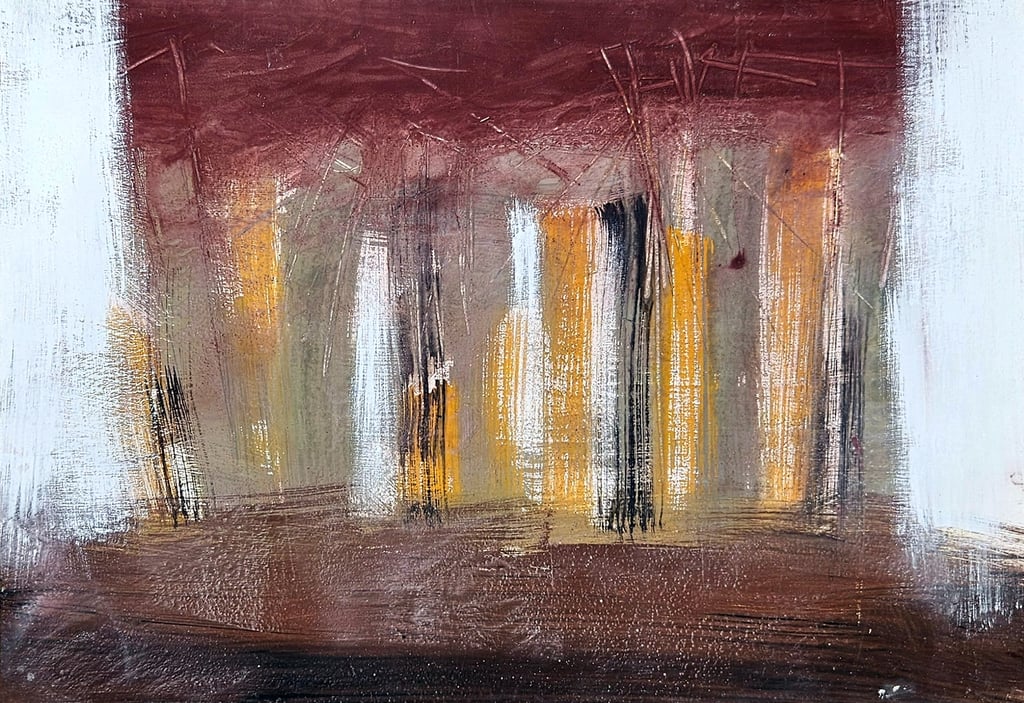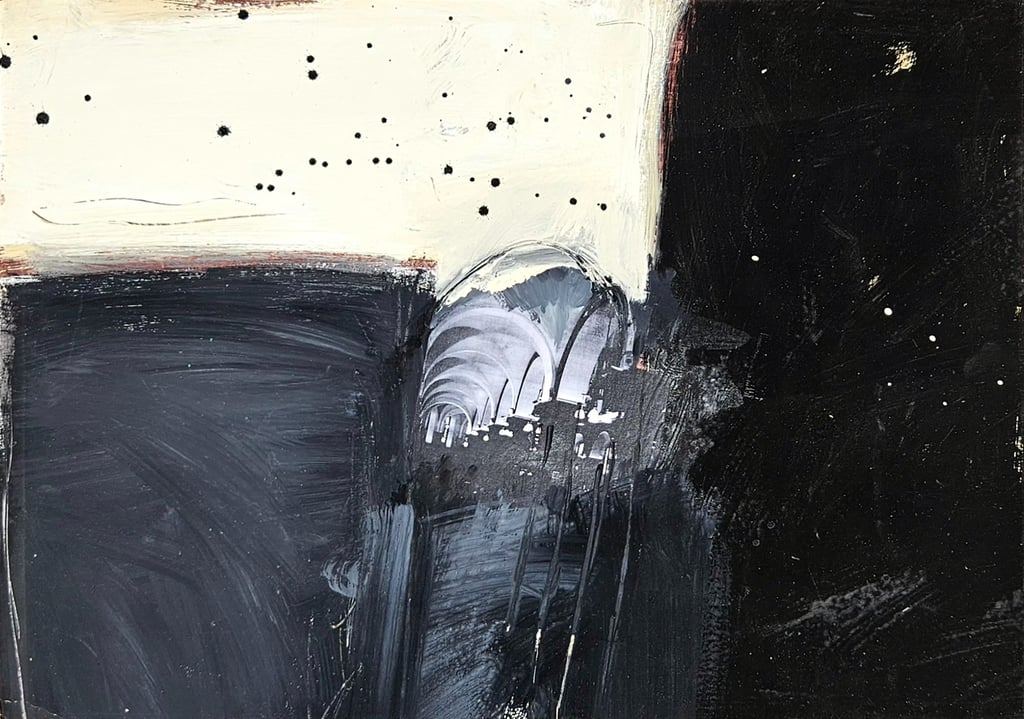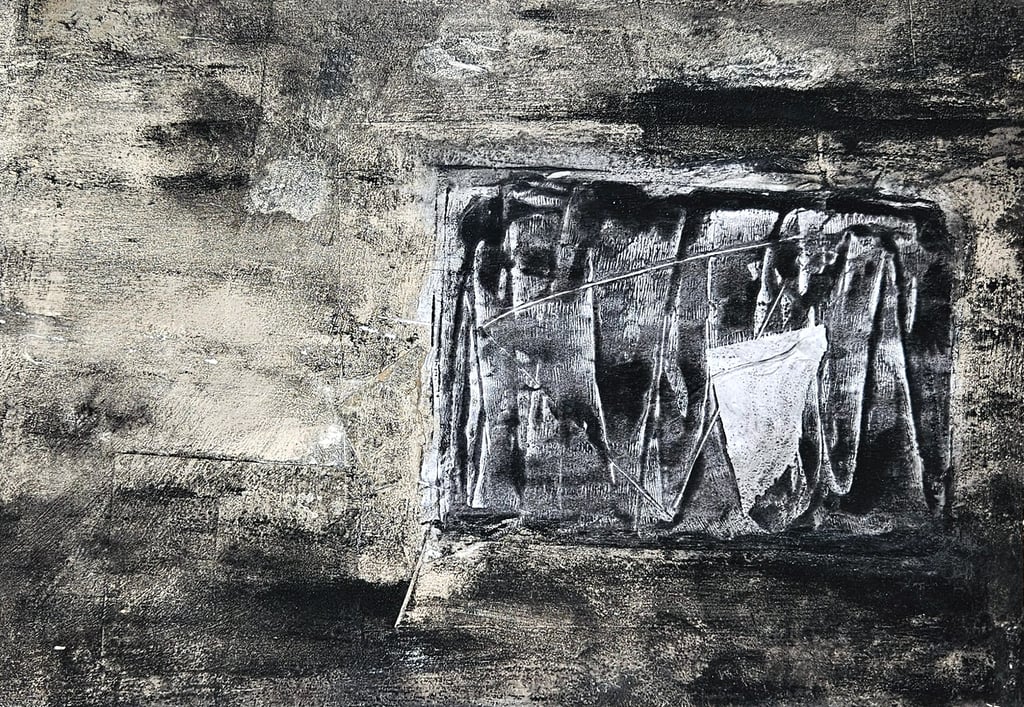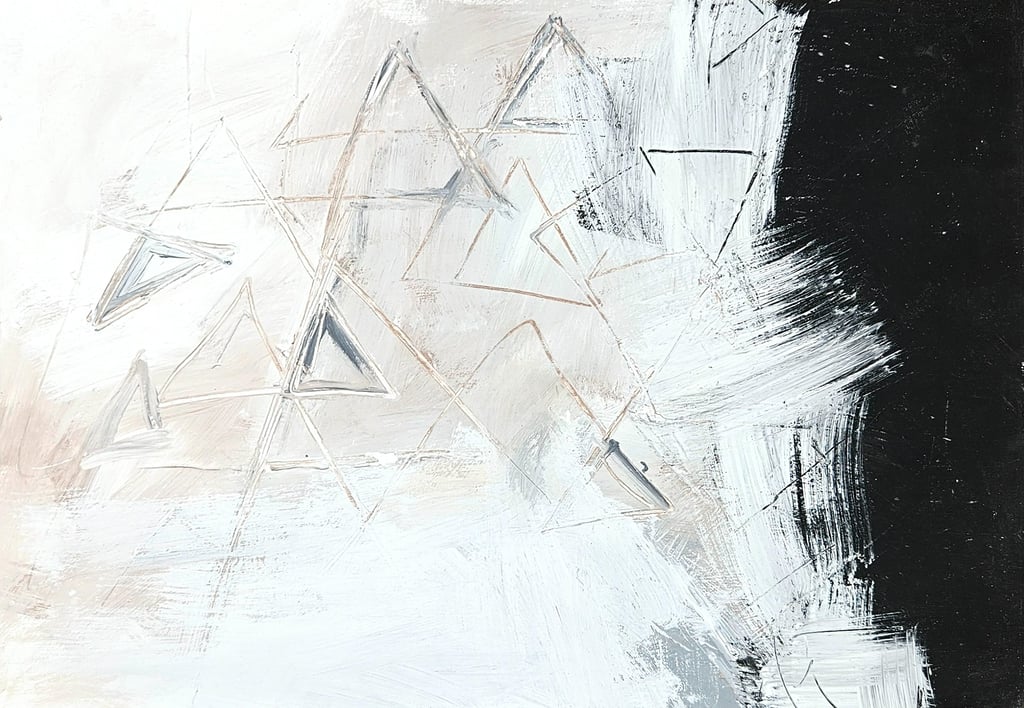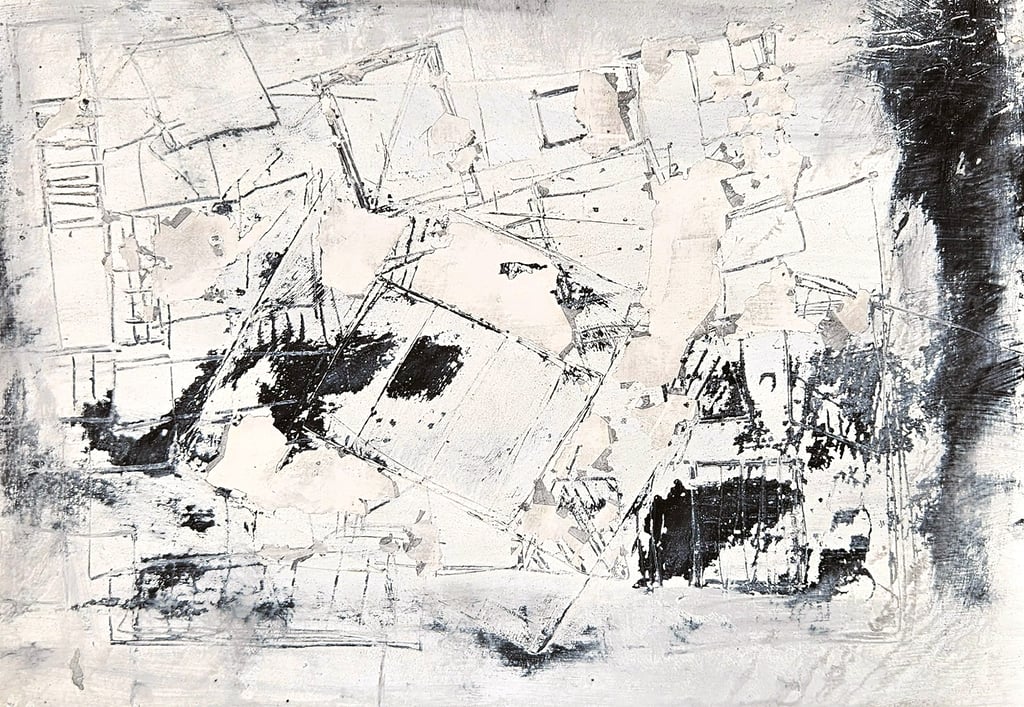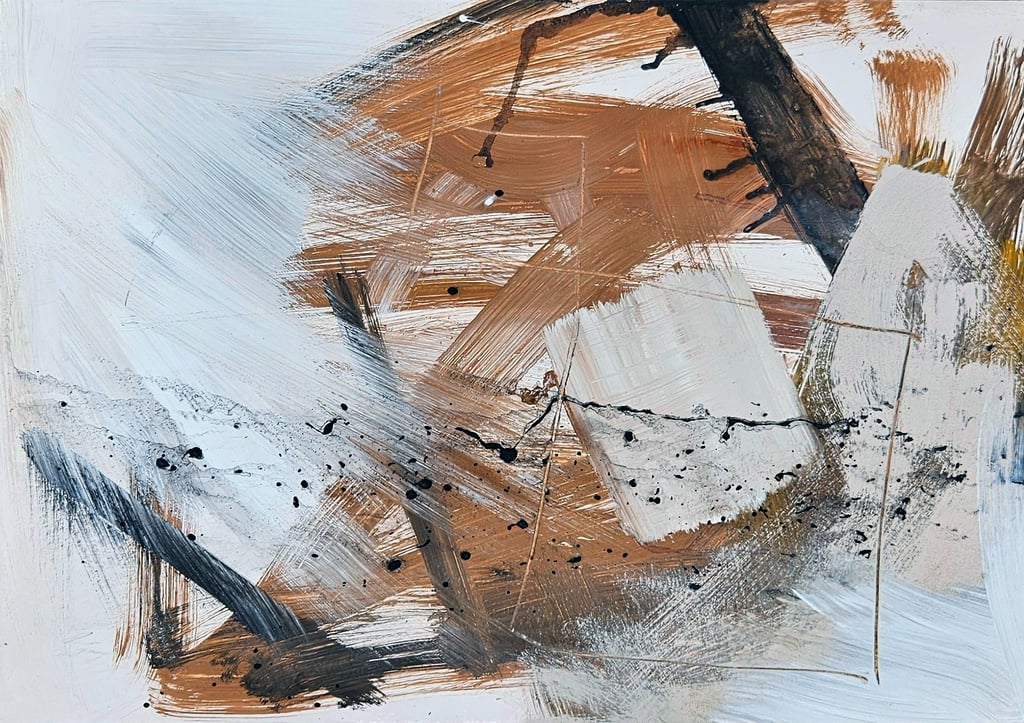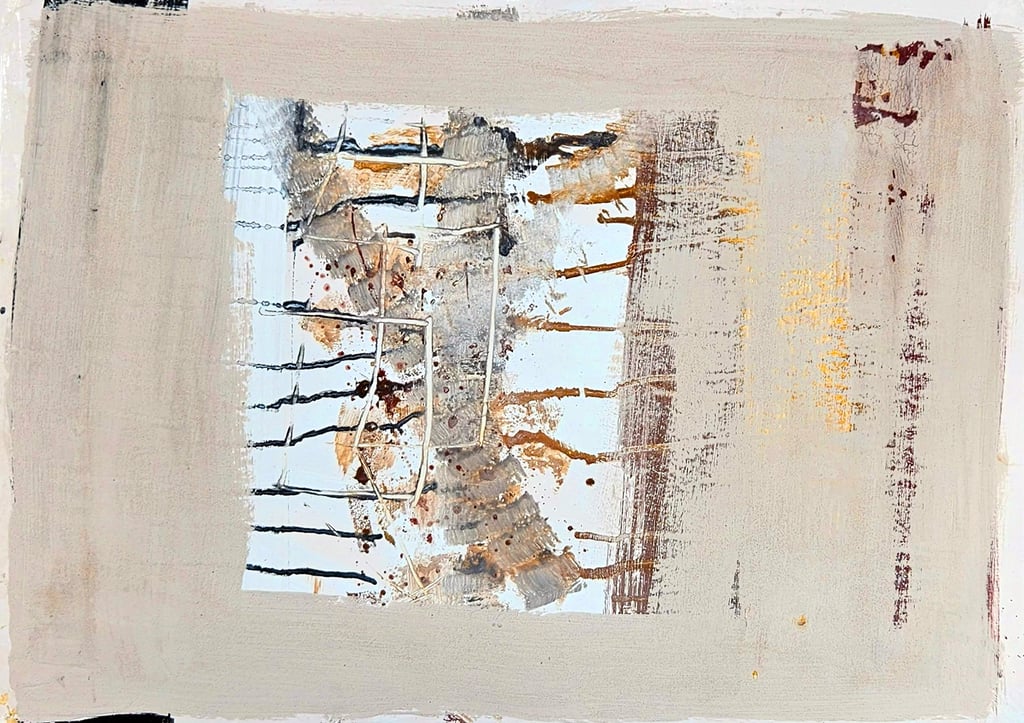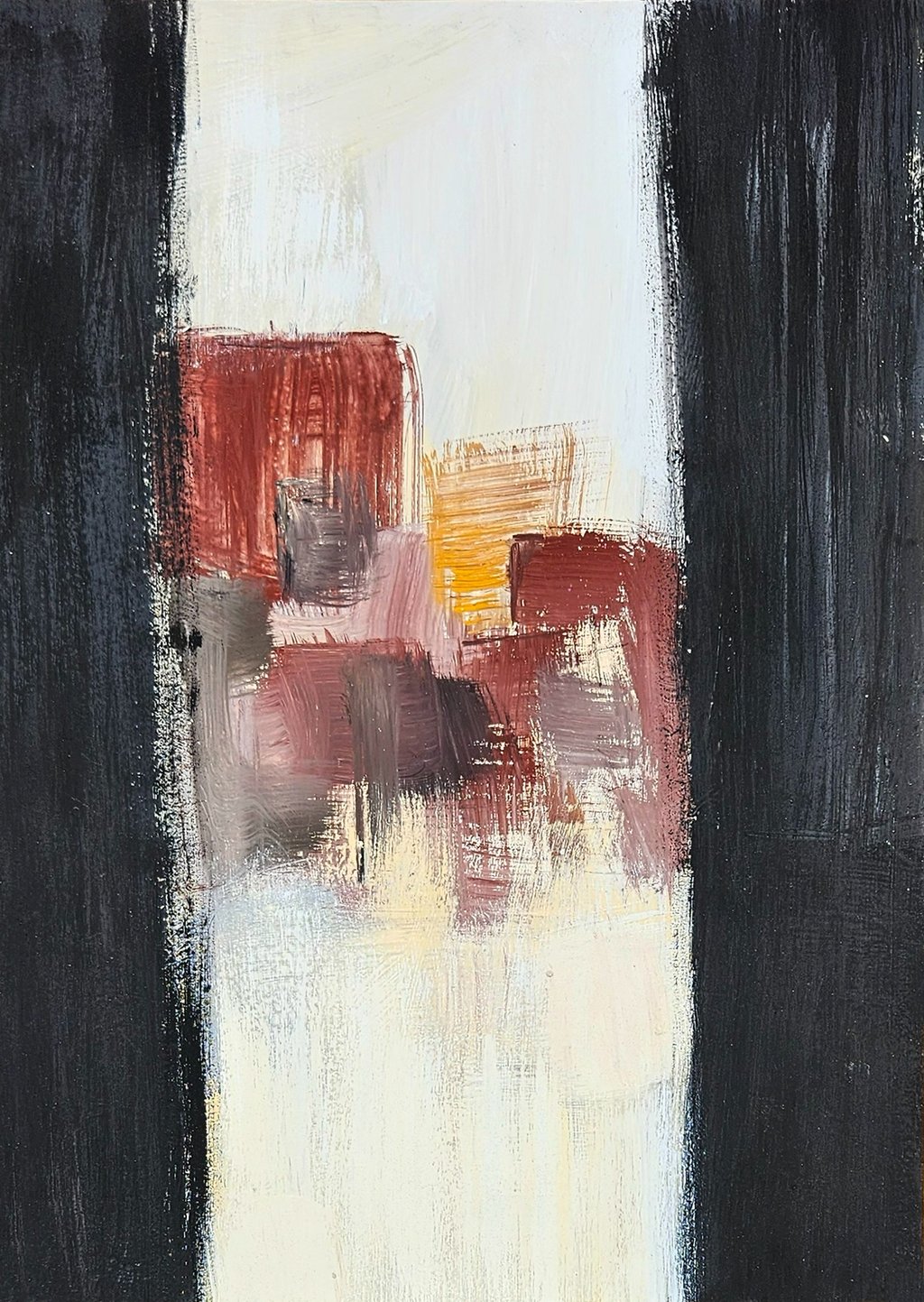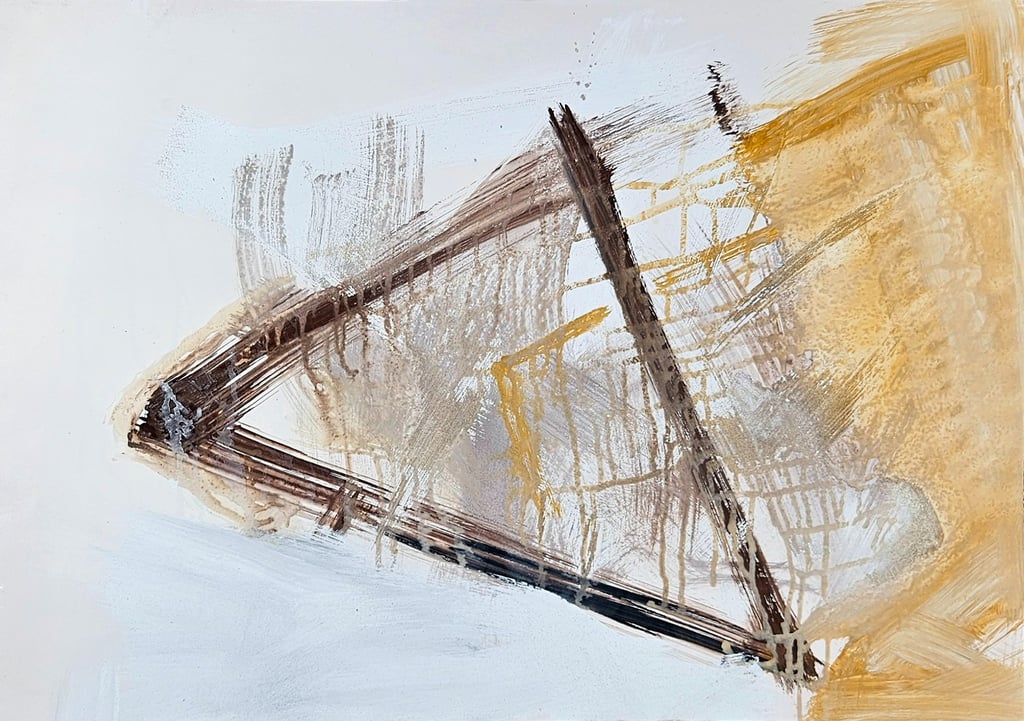Terra Rossa
Acrylic, soil, collage and sand on card
The Terra Rossa series marks one of the studio’s earliest deliberate explorations of mud. The artworks are named after Benghazi's Terra Rossa red soil, which is typical of the Mediterranean, as well as several regions of Africa. It takes up from where Land(space)scapes left off and incorporates a deeper, more intentional use of materiality.
The Tadrart Acacus mountains in the South of Libya contain thousands of prehistoric ochre cave paintings which are referenced in this set. In the modern era, it wasn't until the 20th century that artists like Jean Dubuffet started to mix soil into their work - often as a critique of the good taste of the time.
In this series, sand, ochre and other natural materials add texture to the surface giving the works an architectural intention. Again, like much of the work of the studio, it also highlights the specificity of Africa in both the texture and content of the works. The critique is more of the Italian colonial use of white in North Africa, than French tastes of the 1940s. White is challenged in many of the works with Libyan burgundy or the volcanic black of the Sahara.
2008
1
1. Terra Rossa, acrylic and soil, 84 × 59 cm
2. Alluvial Sligo, acrylic and collage, 84 × 59 cm
2
4
5
3. Cinder 1, acrylic, sand and collage, 80 × 50 cm
4. Cinder 2 Metropolis, acrylic, sand and collage,
80 × 50 cm
3
6
7
8
9
5. Cinder 3, acrylic, sand and collage, 80 × 50 cm
6. Cyrene Clay, acrylic, sand and collage,
80 × 50 cm
7. Kaolina Gold, acrylic, soil and sand, 80 × 50 cm
8. Mud Towers, acrylic, soil and sand,
80 × 50 cm

